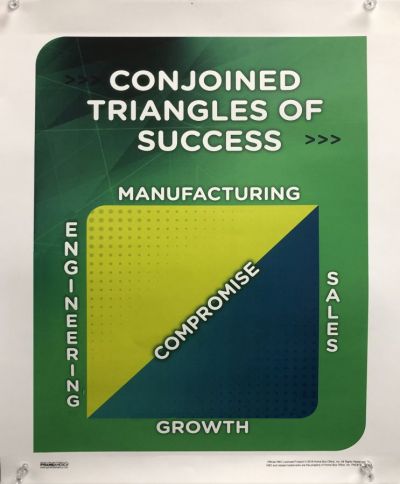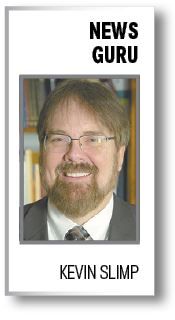One secret to a newspaper’s success
Kevin Slimp
Aug 1, 2019


My work life changed a bit recently. Even though I run several small companies, I’ve been working out of my home for the past 18 months. My helpers work out of their homes, and we seem to get everything done without any problems, except one.
If you know me, and many of you do, you probably aren’t surprised to know that I’m not a big fan of working by myself all day. I get energized by interactions with other folks; spending eight to 12 hours in front of a computer each day without human interaction was, in layman’s terms, driving me wacky. That’s one reason I still travel a few times each month to speak at conventions and work with local newspapers.
In June, I began visiting office complexes around Knoxville, Tennessee — my hometown — but none gave me the human interaction I was looking for. My staff members are happy working from their homes, and I have no reason to force them to an office every day. So, I was still dealing with the reality of working alone, even if I was in an office with a receptionist, surrounded by other offices.
That’s when I found what could be the perfect spot for me. I kept hearing about shared workspaces in larger cities like New York and Los Angeles. It took a few days, but I found just such a place in Knoxville. Located on the first floor of a large building in West Knoxville, the space is shared by a dozen businesses, the largest being Amazon — yes, the online Amazon. They have about 20 folks, mostly programmers, working on all sides of me.
In addition to my new workmates from Amazon, there are lawyers, data management companies, convention planners, a group that heads up focus groups internationally, and a few others.
I’m quite an anomaly, being quite a bit older than most of the 20-somethings surrounding me, plus having work that, to them, seems like a lot more fun than computer programming and data management. After a couple of weeks, I’m getting used to young men and women stopping by to tell me how “cool” my huge monitors are or to tell me how lucky I am to get to work on fun projects every day. I suppose there’s something to that “grass is greener on the other side” philosophy.
I shared this background material to bring us to this point: A few days ago, I noticed a poster hanging up on one of the walls. The shared space is large, so there are a lot of posters on the walls, most having to do with increasing revenue in one way or another. A few days ago, one caught my eye with the headline
“Conjoined Triangles of Success.”
After a little digging, I learned the Conjoined Triangles of Success are actually a fictional business theory introduced on HBO’s Silicon Valley TV series. Interestingly, most of my workmates didn’t realize this was an imaginary business model.
Like most ideas in the HBO series, the Conjoined Triangles of Success is a piece of satire that seems so real that most of my new friends had no idea they aren’t real.
In a conversation with a group of 20-somethings at our office earlier this week, I noted, “This business plan would never work. It’s missing the most important element of a successful business.”
I could see them staring at the poster, looking for a hint as to what was missing. Finally, a young man piped up, “I don’t see it. What’s missing?”
“It’s simple,” I answered. “Customer service.”
Heads began to nod. The young man spoke up again, “You’re right. Customer service isn’t on there.”
With newspaper groups merging, staffs getting smaller (at some papers) and more effort being made to increase revenue and decrease expenses, I would suggest that it would be easy for newspapers to fall for a fake business plan. Like Silicon Valley, there are plenty of businesses spewing rhetoric that sounds good but won’t grow many businesses.
I visit a lot of healthy newspapers in an industry that many have given up for dead. It’s not uncommon for folks to email or ask me at a convention, “What’s their secret?”
Well, there is more than one secret to a newspaper’s success. Let me suggest that the greatest might just be good customer service.
Over the next few weeks, I’ll travel to places like Columbus, Ohio; Spokane, Washington; Billings, Montana; and New York. Along the way, more than a few folks will stop me and ask me to share some “secrets with them.”
Now, you know one of them.
Kevin Slimp is chief executive officer of newspaperacademy.com and director of The Newspaper Institute. Contact Kevin at kevin@kevinslimp.com.










